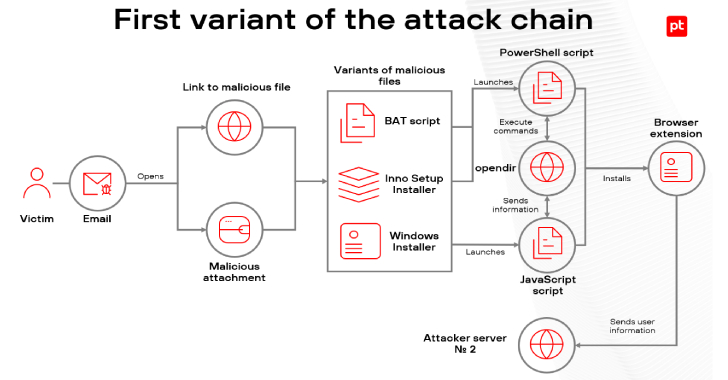
An Operational Resilience Program Checklist
In today’s dynamic and interconnected business landscape, operational resilience has become a top priority for organizations across the globe. The COVID-19 pandemic, cyber threats, natural disasters, and other unexpected disruptions have highlighted the need for companies to be prepared for the unexpected. To achieve operational resilience, organizations need a well-thought-out program in place. In this article, we will delve into the key components of an Operational Resilience Program and provide a comprehensive checklist to guide organizations in building and strengthening their resilience.
The Importance of Operational Resilience
Operational resilience is the ability of an organization to continue its essential functions, serve customers, and maintain its reputation and value, even in the face of unexpected disruptions. Such disruptions can range from cyberattacks and supply chain disruptions to natural disasters and global pandemics.
The importance of operational resilience cannot be overstated. When a company is operationally resilient, it can withstand shocks, adapt to changing circumstances, and recover quickly from setbacks. This not only minimizes financial losses but also preserves customer trust and safeguards the organization’s long-term viability.
Building an Operational Resilience Program
Creating an operational resilience program is a complex undertaking that requires a holistic approach. It involves identifying critical business functions, assessing risks, implementing mitigation measures, and ensuring continuous monitoring and improvement. Here’s a checklist to guide organizations through the process:
- Leadership and Governance
Appoint a senior executive or board member responsible for operational resilience.
Establish a governance structure with clearly defined roles and responsibilities.
Ensure that the board of directors is engaged and supportive of resilience initiatives.
- Risk Assessment
Identify and assess all potential risks and threats to your organization.
Prioritize risks based on their potential impact and likelihood.
Conduct scenario analysis to understand the range of possible disruptions.
- Business Impact Analysis
Identify critical business functions and processes.
Assess the financial and reputational impact of disruptions to these functions.
Define recovery time objectives (RTOs) and recovery point objectives (RPOs) for each critical function.
- Mitigation and Response
Develop and implement strategies to mitigate identified risks.
Create a comprehensive incident response plan for various types of disruptions.
Test your response plan through tabletop exercises and simulations.
- Supply Chain Resilience
Evaluate the resilience of your supply chain and identify potential vulnerabilities.
Diversify suppliers and establish alternative sourcing options.
Build strong relationships with key suppliers and conduct regular risk assessments.
- Technology Resilience
Ensure that your IT infrastructure and systems are robust and secure.
Implement backup and recovery solutions to minimize downtime.
Regularly update and patch software to address vulnerabilities.
- People and Skills
Train employees on their roles and responsibilities during disruptions.
Cross-train employees to ensure redundancy in critical functions.
Develop a communication plan to keep employees informed during crises.
- Testing and Simulation
Conduct regular resilience testing exercises to evaluate your program’s effectiveness.
Include both technical and non-technical staff in testing scenarios.
Use the results of tests to refine and improve your resilience strategies.
- Communication and Reputation Management
Develop a crisis communication plan to keep stakeholders informed.
Monitor social media and news outlets for mentions of your organization during disruptions.
Be proactive in addressing customer concerns and maintaining trust.
- Regulatory Compliance
Ensure that your resilience program aligns with relevant regulations and industry standards.
Stay informed about changes in regulations that may impact your organization.
Engage with regulators to demonstrate your commitment to operational resilience.
- Continuous Monitoring and Improvement
Establish key performance indicators (KPIs) to measure the effectiveness of your program.
Conduct regular reviews and assessments to identify areas for improvement.
Adapt and update your resilience strategies as the business environment evolves.
Challenges and Considerations
Building and maintaining an operational resilience program is not without its challenges. Here are some additional considerations to keep in mind:
- Resource Allocation
Adequate resources, including budget and personnel, are essential for a robust program.
Ensure that your organization is willing to invest in resilience as a long-term strategic priority.
- Third-Party Risk
Assess the resilience of third-party vendors and service providers.
Include contractual provisions that require third parties to meet certain resilience standards.
- Data Privacy and Security
Implement strong data security measures to protect sensitive information during disruptions.
Comply with data privacy regulations, which may impose additional requirements during crises.
- Cultural Shift
Foster a culture of resilience throughout the organization.
Encourage employees to report potential risks and incidents without fear of reprisal.
- Supply Chain Complexity
Global supply chains can be highly complex; consider mapping your supply chain to understand dependencies fully.
Diversify sourcing to reduce overreliance on specific regions or suppliers.
Conclusion
In an era where disruptions are a constant threat, operational resilience is not a luxury but a necessity for organizations of all sizes and industries. By following the checklist outlined in this article, businesses can build a comprehensive operational resilience program that helps them weather storms, adapt to change, and emerge stronger from adversity. Remember that operational resilience is an ongoing journey, and continuous improvement is key to staying prepared for whatever challenges the future may bring.
Contact Cyber Defense Advisors to learn more about our Operational Resilience Program solutions.




